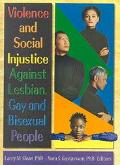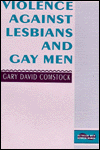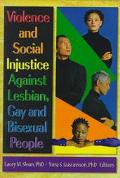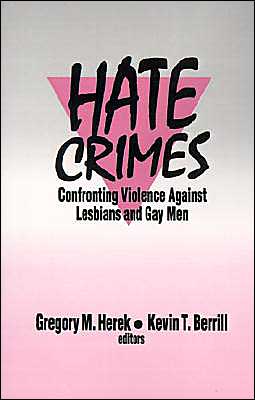Hate Crimes: New Social Movements and the Politics of Violence
Violence directed at victimized groups because of their real or imagined characteristics is as old as humankind. Why, then, have "hate crimes" only recently become recognized as a serious social problem, especially in the United States? This book addresses a timely set of questions about the politics and dynamics of intergroup violence manifested as discrimination. It explores such issues as why injuries against some groups of people—Jews, people of color, gays and lesbians, and, on...
Search in google:
In addressing a timely set of questions about the politics and dynamics of inter-group violence manifest as discrimination, this volume explores such issues as why injuries against some groups of people (Jews, people of color,gays and lesbians, and, sometimes, women, and those with disabilities) capture notice, while similar acts of bias-motivated violence against others continue to go unnoticed. Throughout, the authors develop a compelling argument about the social processes through which new social problems emerge, social policy is developed and diffused, and new cultural forms are institutionalized.
Acknowledgments1IntroductionThe Social Problem of Hate-Motivated Violence3Social Problems and Victimization5Social Movements and Collective Action Frames8New Institutionalism and the Diffusion of Cultural Forms10Empirical Focus and Data Collection13Method of Analysis15Overview of the Book162New Discourse on Violence and the Production of Hate CrimesA History of Violence21The Convergence of New Social Movements22SMOs and Newfound Attention to an Old Problem31The Politics of Violence and Attendant Legal Transformations36The Extension of Victim Status to Multiple Constitutences443Discovering and Expanding the DomainAntigay and Lesbian Violence49The Establishment of Gay- and Lesbian-Sponsored Antiviolence Projects50Coalition-Building around Intolerance55Discovering and Documenting Violence59Publicizing and Epidemic of Antigay and Lesbian Violence65Expanding the Domain of the Problem694Framing the ProblemData Collection and Beyond75Crisis Intervention and Victim Assistance77A New Form of Sexual Terrorism80Educational Campaigns88Street Patrols101The Missing Gender103Domain Expansion and Framing1055Contemporary Antiviolence Against Women CampaignsThe Feminist Movement's Historic Focus on Violence111Defining the Organizational Field113State Coalitions114National Organizations128The Institutionalization of Structured Lines of Communication132Setting the Stage for Innovation and Diffusion of Cultural Forms1356Innovation and Diffusion of the Violence Against Women ActInnovation and Diffusion of Cultural Forms139Violence Against Women, Feminism, and the Law141The Violence Against Women Act as an Innovative Idea144A Key Element in the Institutional Environment151At Play in the Field of Law157Diffusion of a Policy Pedigree1637Hate Crime as a Social Problem: Theoretical ImplicationsThe Discovery of Victims and the Criminalization of Injuries171Moving Beyond Hate: Theoretical Implications173App. AGay- and Lesbian-Sponsored Antiviolence Projects in the United States183App. BAn Overview of the Organizational Field187References189Statutes Cited207Index208
\ From the Publisher“Hate crimes, violence directed against religious, racial, and ethnic groups, also finds women and homosexuals as victims. Each of these has resulted in "social movement" groups organized to fight such violence. The authors identified 32 gay and lesbian organizations and 36 feminist groups that have responded to hate crimes. Data collected from these organizations consists of newsletters, reports, articles in newspapers, pamphlets, conference agendas, and the like. Treating this material as 68 case studies, the authors then compare the organizations with respect to their histories of reacting to violence and describe an evolutionary process of movement formation, agenda development, and action… Graduate, faculty.” —D. Harper, Choice “[P]rovide[s] the reader with a better understanding of the social constructions of hate crimes… Its authors describe the process by which affected groups have defined hate crimes as a social problem worthy of attention, and they place the social construction of hate crimes within an appropriate historical and sociological context. Through their extensive study of grassroots antiviolence projects emerging from the civil rights, women’s, and lesbian and gay movements, they document the process by which violence against certain groups becomes visible, gets framed as a problem, and becomes transformed into condemnable criminal conduct.” —Jeanine C. Cogan and Camille Preston, Signs “Jenness and Broad relied upon the constructionist framework to analyze the ways in which hate crimes and the victims of bias incidents are recognized, identified, and labeled through the formation and continued development of social movements, collective action frames and claim-making activities… A number of illuminating points make this monograph an important contribution to the study of hate crimes, organizations, and social movements… This monograph is a valuable resource for upper-level undergraduates, graduate students, scholars, and antiviolence activists. Jenness and Broad’s analysis has done a fine job of moving the literature toward a more historical, structural, and theoretical understanding of hate crimes as a system of social constructs stemming from the evolution and nature of organizational fields.” —Stephanie Shanks-Meile, Social Forces “The “hate crime” has emerged only in the past decade as a widely identified social problem. Jenness and Broad use a constructionist framework to explore its emergence and what determines which social groups get recognized as legitimate victims protected by hate crime legislation… The analysis of the Violence Against Women Act—which redefined violence against women from a private, family matter to a public, civil rights issue—is one of the book’s more well-articulated aspects… Another strength is the book’s comparisons between the antiviolence movement spawned by the women’s movement, now a quarter of a century old, and the much younger product of the modern gay liberation movement.” —Karen Franklin, Gender and Society "This book provides a helpful account of how the social groups in the US have responded to the social scourge of hate crime. It offers a clear and valuable explanation of this complex problem." —Readings: A Journal of Reviews and Commentary in Mental Health\ \





